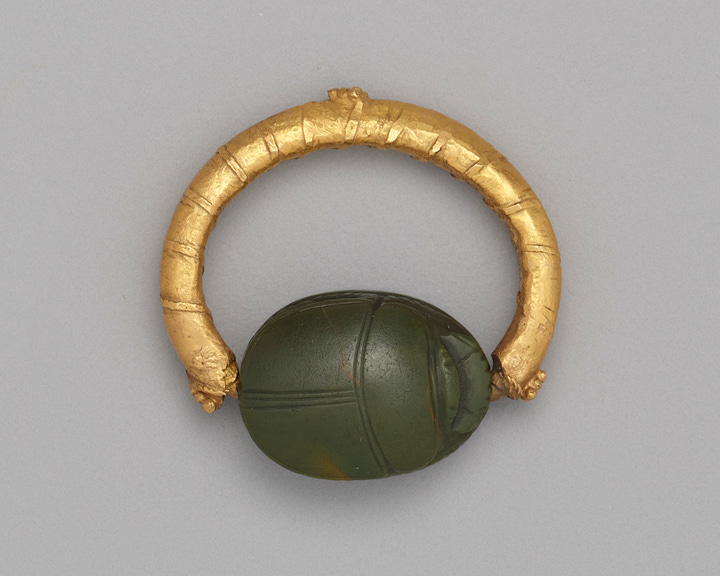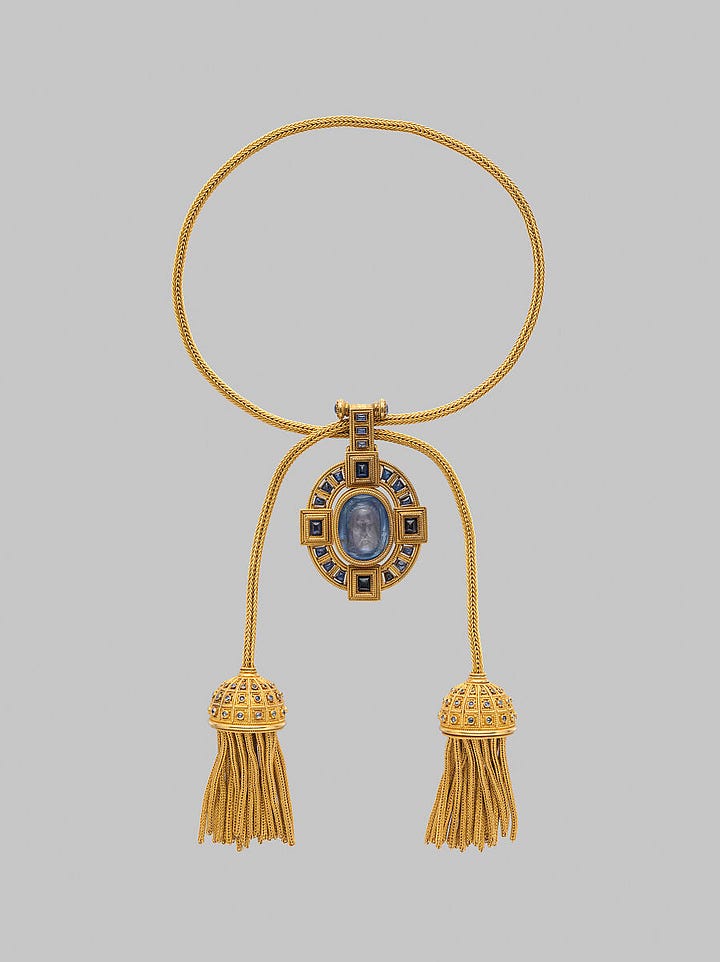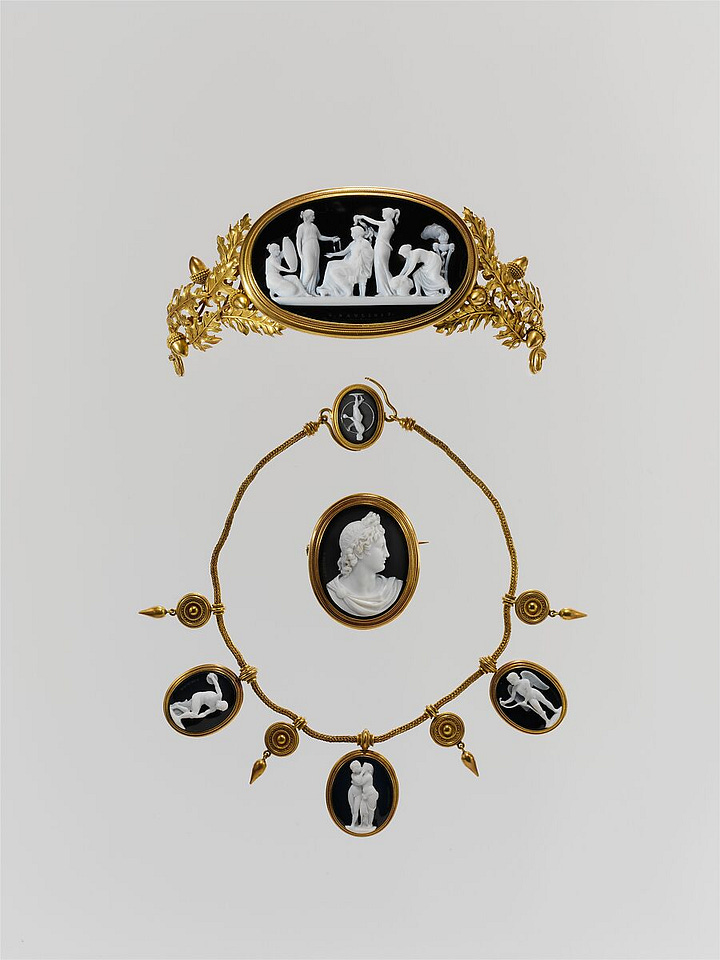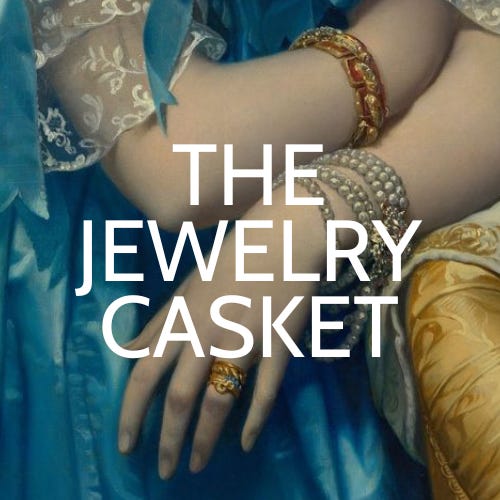Ciao a tutti! Happy Monday (as happy as monday’s can be, that is) This week I am making good on the segment of my blog description that states this newsletter is "...All about art history, travel, food & drink, style, and anything Italian." Emphasis on art history. I began this newsletter by retracing my steps in Italy as a graduate student, and those reflective travel stories will continue. I love writing them.
However, after I finished writing one of my last posts on Galleria Doria Pamphilj and the notorious Olimpia Maidalchini, I was inspired to start a new section on By Odette.
The Jewelry Casket will feature mini-essays on historical jewelry from antiquity to the present, concentrating on many pieces currently residing in museums worldwide! This will be published every other week between regular By Odette travel story posts, so expect it every week(ish) or so in your inbox.
We will also explore jewelry in art, sculpture, and portraits as the wearer often used adornment to communicate important personal aspects, status, power, and wealth. There is so much to talk about when it comes to jewelry throughout history!
I have always loved jewelry, my mother, grandmother, and yes, even great-grandmother saw jewelry as being beyond mere accessories or adornment: they were investments, beautiful heirlooms to be worn, cherished, and passed down for generations. And the cultures of the ancient world through the Renaissance and beyond saw them the same way.


While studying art history in Rome, my obsession with ancient jewelry began in earnest; traveling through museums and collections I realized the jewelry of these ancient cultures was the foundation for today’s styles and aesthetics. I remember being completely enthralled by the history, beauty, and intricacy of each piece – buildings were laid to ruin, but 3,000 years later gold jewelry resurfaced, gleaming and intact.
The Jewelry Casket will also explore jewelry throughout the ages apart from antiquity:
Georgian Era (1714 – 1837)
The Victorian Era (1837 – 1901)
Edwardian Era (1901 – 1915)
Art Nouveau (1890 – 1910)
Art Deco Era (1920 – 1945)
Retro Era (1939 – 1950)
The Victorian era is a particular favorite of mine! During this period, archaeological discoveries in Italy spurred the production, and popularity, of Revival Jewelry — pieces that imitate ancient artifacts and draw inspiration from the past.


So, why The Jewelry Casket? It’s a strange name, but there is a method to the madness. While the term casket reminds us of funerals today, historically caskets were a type of small ornate chest that held jewelry and other small valuables. Jewelry caskets have been used since the time of the ancient Egyptians, and many are works of art in themselves being made with ivory, enamel, and other precious materials.
At one point, the term casket began to be used interchangeably with the word coffin in North America, which is the proper word for the box used to bury the dead. This was likely due to the thought that the person concealed within was a jewel themselves. It’s a sentimental thought.
But no, The Jewelry Casket is NOT where glittering dreams go to die, it’s where I can share all the love and knowledge I have on antiquities, jewelry, and art with all of you. I can’t wait to get started!
Thank you for reading my musings and ramblings! If you liked this post please hit that <3 button






Will be following this, great topic! Have you been to the gold room at Villa Giulia?
The linguistic game used for you is amazing. I loved reading your explanations. I am proud of you and your writing. God bless you! Besos, tia Tere